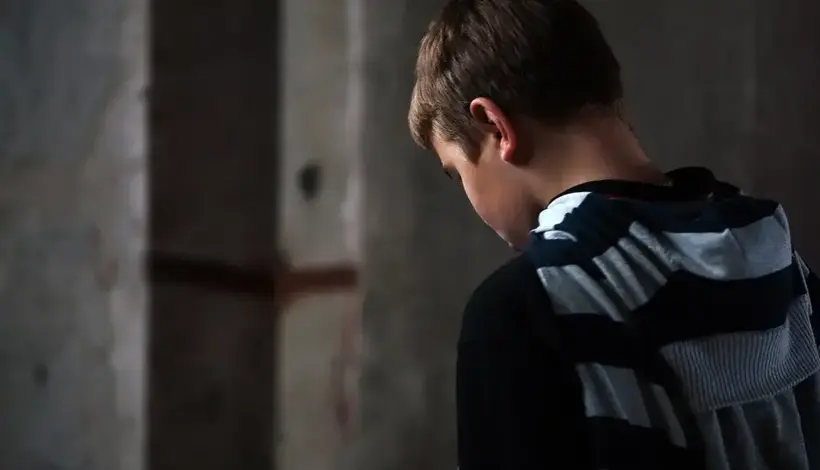Understanding Crimes and Adolescence: A Multifaceted Perspective

Adolescence is a pivotal stage of development, marked by rapid physical, emotional, and psychological changes. While most teenagers navigate this period with support from family, peers, and educators, some find themselves entangled in criminal behavior, raising concerns among parents, educators, and policymakers alike. Crimes committed by adolescents—ranging from petty theft to more serious offenses like vandalism or violence—present a complex challenge that demands a nuanced understanding. This article delves into the relationship between adolescence and crime, exploring the causes, consequences, societal responses, and cultural representations, including a brief look at the series Adolescence[1], to provide a comprehensive view of this critical issue.
The Scope of Adolescent Crime: Statistics and Trends
Adolescent crime is a global concern, with statistics highlighting its prevalence across societies. In the UK, the Youth Justice Board reports that while overall youth crime rates have declined in recent years, certain offenses, such as knife crime among teenagers, remain a significant issue. For instance, the Office for National Statistics notes that a notable percentage of violent crimes involve perpetrators aged 10–17, often linked to gang activity or peer influence. These trends underscore the need to address adolescent crime not as a standalone issue but as a symptom of broader social, psychological, and environmental factors. Understanding these statistics is crucial for educators and parents searching for ways to prevent youth delinquency and support at-risk teens.
Psychological Factors: Why Adolescents Engage in Crime
Adolescence is a time of heightened emotional volatility and identity formation, which can make teenagers more susceptible to risky behaviors, including crime. Psychologically, the adolescent brain is still developing, particularly the prefrontal cortex, which governs impulse control, decision-making, and long-term planning. This developmental stage can lead to impulsive actions, such as shoplifting or vandalism, often driven by a desire for thrill-seeking or peer approval. Additionally, mental health challenges like anxiety, depression, or untreated trauma can exacerbate these tendencies. For example, a teenager struggling with undiagnosed ADHD might act out through disruptive behaviors that escalate into criminal acts if not addressed. Recognizing these psychological drivers is essential for developing targeted interventions that address the root causes of adolescent crime rather than merely punishing the behavior.
Social and Environmental Influences on Adolescent Crime
The environment in which a teenager grows up plays a significant role in their likelihood of engaging in criminal behavior. Socioeconomic factors, such as poverty, unemployment, or living in high-crime neighborhoods, can create a sense of hopelessness or desperation, pushing some adolescents toward crime as a means of survival or status. Family dynamics also matter—teenagers from unstable homes, where they may experience neglect, abuse, or lack of parental supervision, are more likely to seek belonging in peer groups that encourage delinquent behavior. For instance, gang involvement often provides a sense of community and protection for teens who feel alienated elsewhere, but it frequently leads to criminal activity. Schools, too, can influence outcomes: a lack of resources, bullying, or disengagement from education can drive some teens to act out. Addressing these social determinants requires a collaborative effort from families, communities, and policymakers to create supportive environments that steer adolescents away from crime.
Crimonology and Psychology
🏷️ Only £70 per month
⏱️ Duration: 2 hours per week for 10 months
👨🏫 Taught by human instructor
💻 Remote Live learning
📖 Free study notes and resources
🎓 Option to receive a certificate of completion
The Role of Peer Influence and Technology
Peer influence is a powerful force during adolescence, often shaping a teenager’s behavior more than parental guidance. Teens seeking acceptance may engage in criminal acts to gain approval from their peers, particularly in groups where delinquency is normalized. For example, a teenager might participate in vandalism or theft as part of a dare, fearing social rejection if they refuse. The rise of technology and social media has amplified this dynamic, introducing new avenues for crime. Cyberbullying, online scams, and the distribution of illegal content are increasingly common among adolescents, often facilitated by the anonymity of the internet. Moreover, exposure to violent content online—whether through video games, social media, or forums—can desensitize some teens to aggression, potentially contributing to real-world criminal behavior. While technology offers educational opportunities, its misuse highlights the need for digital literacy and parental oversight to mitigate its risks in the context of adolescent crime.
Legal and Societal Responses to Adolescent Crime
When adolescents commit crimes, the legal system faces the challenge of balancing accountability with rehabilitation. In the UK, the youth justice system emphasizes rehabilitation over punishment, recognizing that teenagers are still developing and capable of change. Programs like Youth Offending Teams work with young offenders to address underlying issues, such as family problems or substance abuse, through counseling, community service, or restorative justice initiatives. However, societal attitudes toward adolescent crime can vary widely. Some advocate for stricter punishments, arguing that leniency fails to deter repeat offenses, while others emphasize prevention through education and mental health support. High-profile cases, such as those involving violent crimes by teenagers, often spark public debates about whether adolescents should be tried as adults, raising questions about fairness, maturity, and the potential for rehabilitation. These responses highlight the complexity of addressing adolescent crime within a framework that seeks both justice and long-term societal benefit.
The Impact of Crime on Adolescent Development
Engaging in criminal behavior during adolescence can have profound, long-lasting effects on a teenager’s development. Legally, a criminal record can limit future opportunities, such as access to higher education or employment, perpetuating a cycle of disadvantage. Psychologically, the stigma of being labeled a “delinquent” can damage self-esteem and reinforce negative behaviors, especially if the teen internalizes this identity. Socially, involvement in crime can strain relationships with family and peers, isolating the adolescent from positive influences and deepening their engagement with delinquent groups. For example, a teenager arrested for theft might struggle to regain their parents’ trust, leading to further rebellion. On the other hand, early intervention—through counseling, mentorship, or community programs—can redirect a teen’s path, helping them build resilience and make better choices. Understanding these impacts underscores the importance of addressing adolescent crime proactively to support healthy development.
Cultural Representations: Insights from the Series Adolescence
Popular culture often reflects societal concerns about adolescent crime, offering a lens through which to explore these issues. The series Adolescence provides a fictional yet thought-provoking portrayal of teenagers navigating the challenges of growing up, including their encounters with crime. The show depicts characters grappling with peer pressure, family dysfunction, and the allure of delinquency, such as drug use and vandalism, as they search for identity and belonging. While dramatized, Adolescence highlights the emotional struggles that can lead teens to criminal behavior, resonating with real-world experiences. Such cultural representations can spark important conversations about the factors driving adolescent crime, encouraging parents and educators to reflect on how they can better support teens during this vulnerable stage.
Prevention Strategies: Supporting Adolescents Effectively
Preventing adolescent crime requires a multifaceted approach that addresses both individual and systemic factors. At the individual level, early intervention is key—schools can implement programs that teach emotional regulation, conflict resolution, and decision-making skills to help teens manage impulses and peer pressure. Parental involvement is equally critical; fostering open communication and providing a stable, supportive home environment can reduce the likelihood of delinquent behavior. At the community level, initiatives like after-school programs, sports clubs, and mentorship schemes offer positive outlets for teens, helping them build self-esteem and a sense of purpose. On a broader scale, policymakers can invest in education, mental health services, and social support systems to address the root causes of crime, such as poverty and inequality. By combining these strategies, society can create a safety net that guides adolescents toward positive outcomes, reducing their risk of criminal involvement.
The Role of Education in Shaping Adolescent Behavior
Education plays a pivotal role in preventing adolescent crime by equipping teens with the skills and knowledge they need to make informed choices. Schools are not just places for academic learning—they’re environments where social and emotional development occurs. Teachers can foster critical thinking, empathy, and resilience, helping students navigate challenges without resorting to crime. For example, programs that teach media literacy can help teens critically evaluate online content, reducing the risk of cybercrime or exposure to harmful influences. Additionally, schools can serve as safe spaces where at-risk teens are identified early and connected with support services, such as counselors or social workers. By prioritizing holistic education, we can empower adolescents to build a strong moral foundation and resist the temptations of delinquency.
Moving Forward: A Collective Responsibility
Addressing the intersection of crimes and adolescence requires a collective effort from families, educators, communities, and policymakers. While the internet and popular culture, like the netflix series Adolescence, highlight the challenges teens face, they also remind us of the importance of empathy and understanding. Adolescents who engage in crime are often responding to unmet needs—whether emotional, social, or economic—and punishing them without addressing these needs is unlikely to yield lasting change. Instead, we must focus on prevention, rehabilitation, and support, recognizing that adolescence is a time of growth and potential. By fostering environments where teens feel valued and supported, we can guide them away from crime and toward a brighter future, benefiting both the individual and society as a whole.
Learn More with OnSeminars
At OnSeminars, we’re committed to helping you understand complex issues like adolescent behavior and crime through expert-led programs. Our Criminology and Psychology seminar offers in-depth insights into the factors driving youth delinquency, equipping educators, professionals, and parents with practical tools to make a difference. Visit our Live Seminars page to find the perfect program for you and start your learning journey with OnSeminars!

